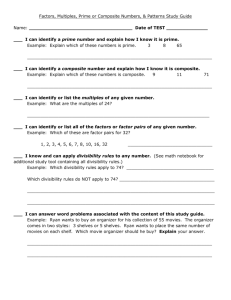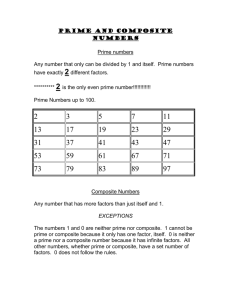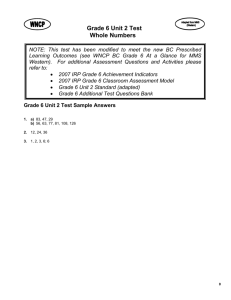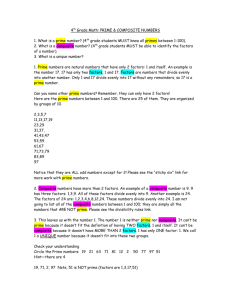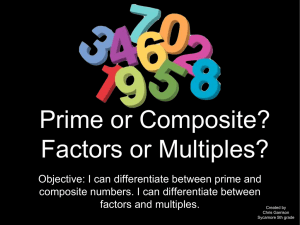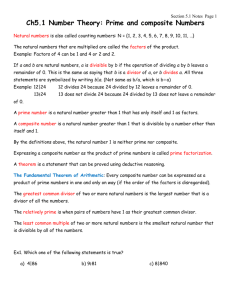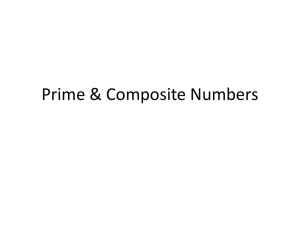Essential Standard Big Ideas Essential Questions
advertisement
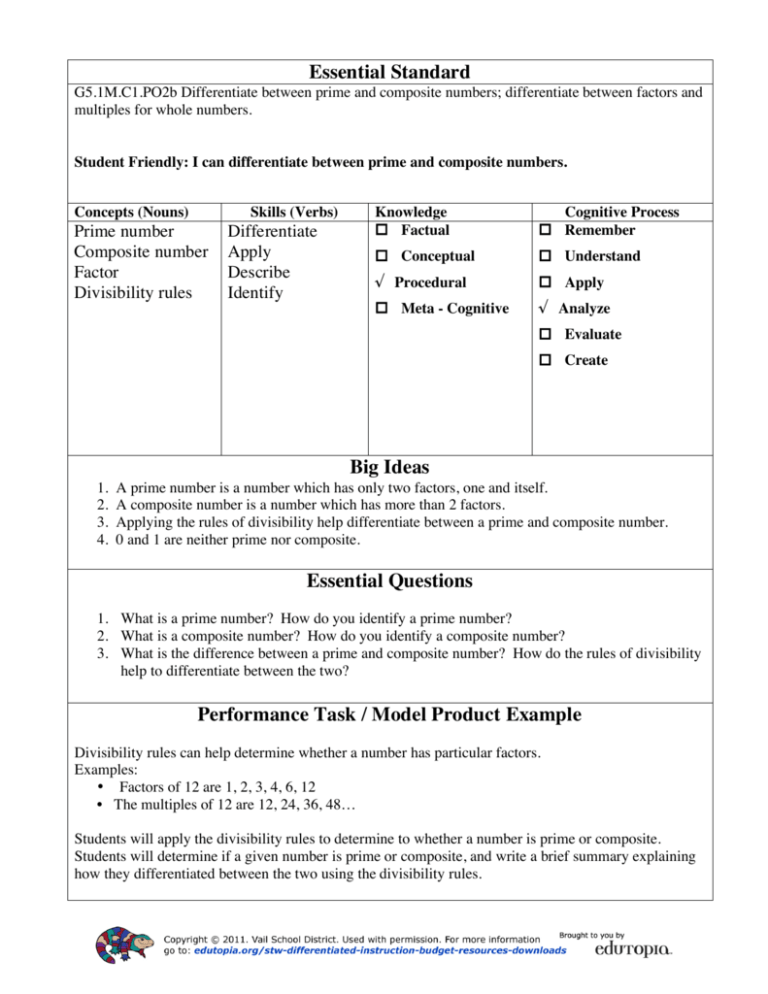
Essential Standard G5.1M.C1.PO2b Differentiate between prime and composite numbers; differentiate between factors and multiples for whole numbers. Student Friendly: I can differentiate between prime and composite numbers. Concepts (Nouns) Skills (Verbs) Prime number Composite number Factor Divisibility rules Differentiate Apply Describe Identify Knowledge Factual Cognitive Process Remember Conceptual Understand √ Procedural Apply Meta - Cognitive √ Analyze Evaluate Create Big Ideas 1. 2. 3. 4. A prime number is a number which has only two factors, one and itself. A composite number is a number which has more than 2 factors. Applying the rules of divisibility help differentiate between a prime and composite number. 0 and 1 are neither prime nor composite. Essential Questions 1. What is a prime number? How do you identify a prime number? 2. What is a composite number? How do you identify a composite number? 3. What is the difference between a prime and composite number? How do the rules of divisibility help to differentiate between the two? Performance Task / Model Product Example Divisibility rules can help determine whether a number has particular factors. Examples: • Factors of 12 are 1, 2, 3, 4, 6, 12 • The multiples of 12 are 12, 24, 36, 48… Students will apply the divisibility rules to determine to whether a number is prime or composite. Students will determine if a given number is prime or composite, and write a brief summary explaining how they differentiated between the two using the divisibility rules.
